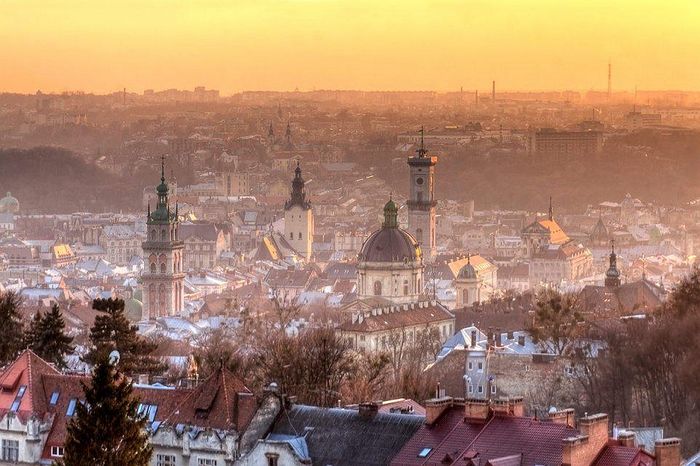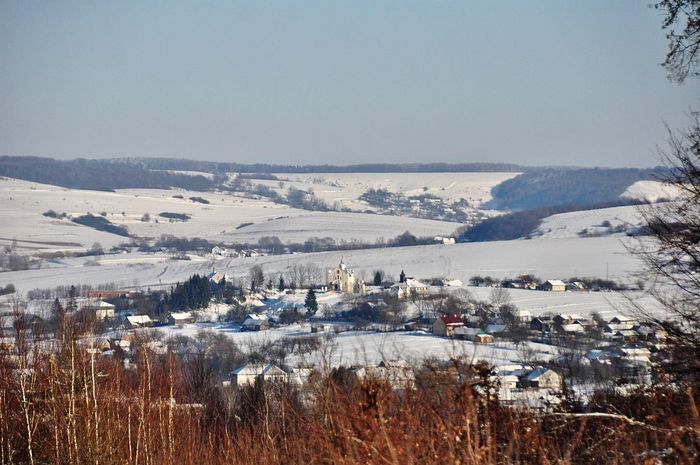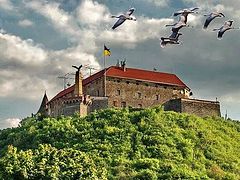Introduction by Matfey Shaheen:
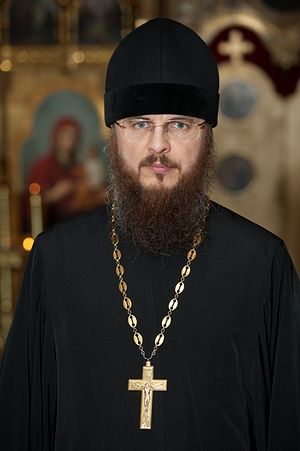 Archpriest Rostislav Yarema The author of this article, one of a series on Western Ukraine, is the well-known Ukrainian Archpriest and Professor Rostislav Yarema, who was born and raised in the region of capital of Western Urkaine, Lviv. Father Rostislav is a Doctor of Theology and one of the most qualified experts in the Moscow Patriarchate on matters relating to Orthodox history in Western Ukraine and Poland.
Archpriest Rostislav Yarema The author of this article, one of a series on Western Ukraine, is the well-known Ukrainian Archpriest and Professor Rostislav Yarema, who was born and raised in the region of capital of Western Urkaine, Lviv. Father Rostislav is a Doctor of Theology and one of the most qualified experts in the Moscow Patriarchate on matters relating to Orthodox history in Western Ukraine and Poland.
Father Rostislav is also a giant in the academic and theological world as well, having great authority in matters of Orthodox history in Ukraine, as well as Poland and Russia. He is a graduate of Moscow Theological Academy at Saint Sergius Trinity Lavra in 2010, with the level Candidate of Theology (similar to a Ph.D. in Russia). He then completed his doctorate degree at the Christian Theological Academy in Warsaw, Poland, and was awarded with the title of professor.
In this article, Fr. Rostislav talks about the history of violent church seizures, and secretive Vatican collusion in Ukraine after the breakup of the USSR and the creation of an independent Ukrainian state.
 Photo: Nikita Serdechny / LiveJournal
Photo: Nikita Serdechny / LiveJournal
In accordance with a survey conducted from March 23–28 by the V. Razumkov center, the Church constitutes the most authoritative public institution in Ukraine. She is “trusted” by fifty-seven percent of the citizens who took part in the survey. At the same time, 26.1 percent expressed trust in the media, 13.7 percent in the president, 9.5 percent in the government, and only 5.3 percent in the Verkhovna Rada1.
The Primate of the Ukrainian Orthodox Church, His Beatitude the Metropolitan of Kiev and All Ukraine Onuphry (Berezovsky) (from 2014 to the present time) enjoys the respect and credibility of thirty-two percent of all Ukrainian citizens.
In terms of percentage, citizens identified themselves:
-
78 percent as believers;
-
5 percent as atheists;
-
Indifferent towards matters of faith.
The Paschal service in 2018 was attended by 8.5 million citizens of Ukraine. This year, for the first time, the active participation of believers in eastern Ukraine turned out to be higher than in western regions2. For example, on Pascha Night around one million citizens attended church in the Dnipropetrovsk province, in the Lviv region 800,000, and more than 630,000 in the Odessa region.3
The confessional composition of the population of Ukraine takes the following form:
-
Orthodox – 82 percent;
-
Greek Catholics – 6.5 percent;
-
Roman Catholics – 1 percent;
-
Protestants – 3 percent;
-
Non-Christian confessions – 2 percent.
Orthodoxy dominates across all regions of Ukraine, including Western Ukraine, where fifty-six percent of the population consists of Orthodox, and about one third are Greek Catholics and other confessions.
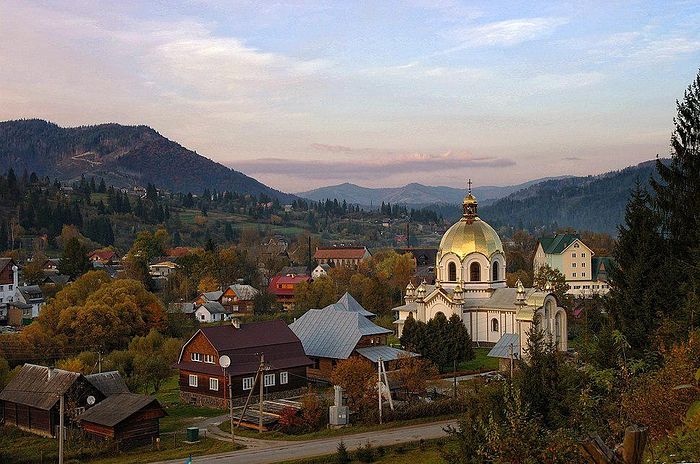 The village of Slavsko, Lviv province. Photo: howlingpixel.com
The village of Slavsko, Lviv province. Photo: howlingpixel.com
The canonical Ukrainian Orthodox Church is the largest confession in Ukraine, having 12,092 parishes and 258 monasteries, in which serve 12,405 clergymen and 4,500 monastics; 1,415 students study in spiritual schools. Churches during divine services are overflowing with believers, whose average age is about fifty years.
At the same time this flourishing church is being defamed across all the media. In the first months of this year, 55 churches were forcibly seized. Citizens of Ukraine are being misled by claims that 450 communities have already left the canonical Orthodox Church and joined with the schismatics.
The above statistics explain both the close attention paid to the church question, by the architects of the post-Soviet transformation of society, as well as the dramatic events in the fields of interconfessional relations taking place in this country. There is nothing new under the sun. We can only correctly understand the nature and essence of these events by looking to the past. And the facts will speak for themselves...
In the mid-80s, people from Ukraine accounted for over fifty percent of the students of the theological schools of the Russian Orthodox Church.4 In 1988, the Russian Orthodox Church possessed 8,500 parishes and 20 monasteries, of which 4,418 churches and 9 monasteries were located in Ukraine. In 1988, 600 churches were transferred [by the government, for use. OC.] to the Russian Orthodox Church, the majority of which are in Galicia56. This year 229 Orthodox parishes were opened in the Ivano-Frankivsk province alone. On August 20, 1989, the Archbishop of Ivano-Frankivsk and Kolomyia Makariy (Svystun) led a nine-day cross procession from the diocesan cathedral to Hoshevsky Monastery in which 40,000 believers participated. During the restoration of Hoshevsky Monastery, 348,000 rubles were raised.7
In the formation of a new model of relations between the Church and the state in Ukraine, after decades of oppression and persecution [by the communist authorities. OC.], prospects for flowering of church life began to be clearly seen. Among the plans of the hierarchy of the Russian Orthodox Church was the opening of an Orthodox theological seminary in Lviv.
If the Orthodox Church had but only five years of tranquil development, Uniatism would never have been able to be revived in Ukraine. However, on August 4, 1987, the underground Greek Catholic bishops Paul Vasylyk and Joseph Semedy, together with twenty-four Uniate priests and monastics, sent a message to Pope John Paul II (1978–2005) on the topic of bringing out the Ukrainian Greek Catholic Church from underground. On June 10, 1988, the Vatican Secretary of State Cardinal Agostino Casaroli, who arrived in Ukraine to participate in the celebration of the 1000th anniversary of the Baptism of Rus’, met with underground Uniate bishops Pavel Vasylyk and Philemon Kurchaba.8 The organization of the sensitive mission of the Secretary of State of the Vatican, who did not want to publicize this meeting, was provided by the rector of a Kiev Catholic church [kostel in Ukrainian9], the Latvian priest Jan Krapans. During the meeting, a mechanism was worked out for the collusion of the Roman Curia with the Uniate underground, with the goal of preventing the revival of Orthodoxy in Galicia.
Encouraged by the assurance of Cardinal Casaroli of all-inclusive support, including financial support from Pope John Paul II, the leaders of the Uniates settled on implementing a plan conceptualized by metropolitan Andrei Sheptytsky for the construction in Galicia of a so-called Catholic Ukrainian Republic.
On February 1, 1990, during a meeting of the hierarchs of the Russian Orthodox Church with A. Lukianov, the First Deputy Chairman of the Supreme Soviet of the USSR, Archbishop Lazar (Shvets’) of Ternopil and Kremenets quoted to him the words of one of those underground [Catholic.—Trans.] bishops who met in 1988 with Cardinal Casaroli, as saying:
“Orthodoxy does not have a place in Western Ukraine; they must resettle in the eastern regions. We will create here the Catholic Ukrainian Republic.”10
To say truthfully, it is not strange for the Vatican to organize such a “cleansing” of the Orthodox population and to create Catholic states. In June of 1929, the Catholic bishops of Poland filed 755 lawsuits demanding in courts the alienation of Orthodox churches and monasteries, with all their movable and immovable property to be given over to the Catholic church.
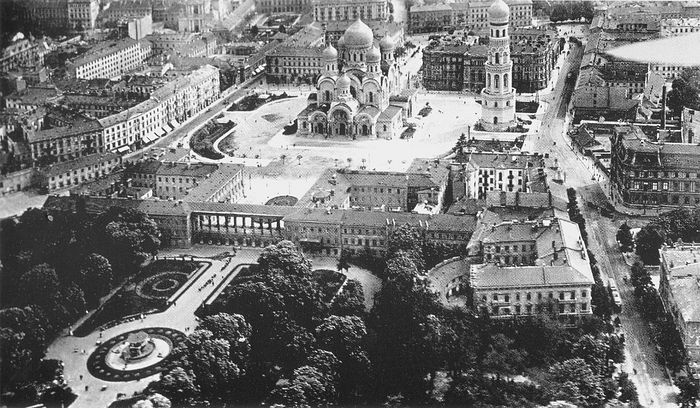 Alexander Nevsky Cathedral in Warsaw, Poland. Photo: Wikipedia
Alexander Nevsky Cathedral in Warsaw, Poland. Photo: Wikipedia
On June 20, 1938, an agreement was signed between the Polish state and the Vatican on the transfer of 12,000 hectares of land to the Catholic Church, as well as all churches and monasteries owned by the Orthodox Church, and following this, the purchase of all that property from the Vatican by the Polish state for 2.5 million złotych—500,000 dollars (an almost symbolic amount). The Roman Prelates, of course, understood that by this agreement the Orthodox churches of Poland would be condemned to destruction.
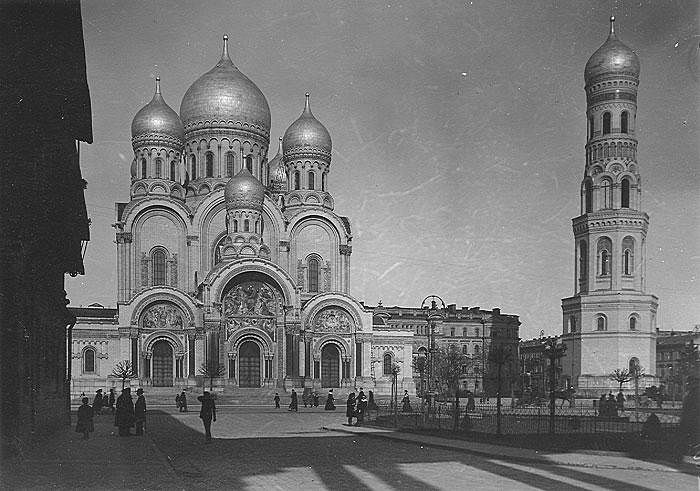 Alexander Nevsky Cathedral in Warsaw, Poland. photo: Reddit
Alexander Nevsky Cathedral in Warsaw, Poland. photo: Reddit
In 1926, the majestic Alexander Nevsky Cathedral in Warsaw was blown up. Created by the outstanding architect Leon Benois, and decorated with mosaics and frescoes by the best Russian artists lead by Viktor Vasnetsov, this church constituted a unique work of art; it must be said that the godless Bolsheviks for a whole fifteen years did not have the resolve to follow the example of the “God-fearing” Polish Catholics—the Cathedral of Christ the Savior was demolished only in 1931.
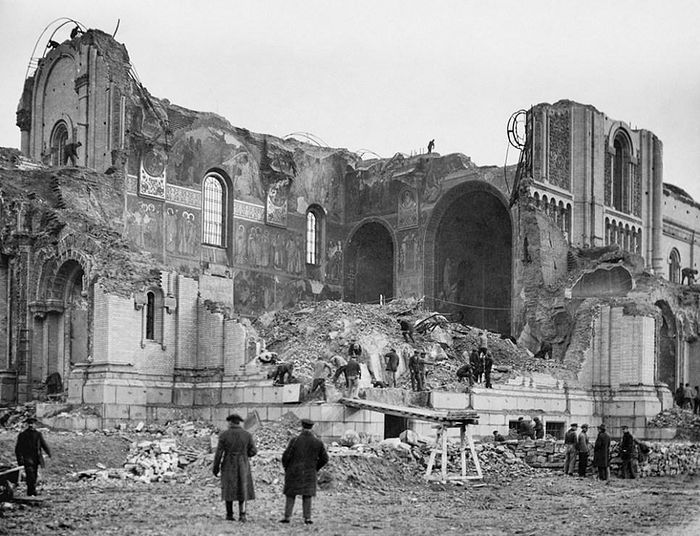 The Ruins of Alexander Nevsky Cathedral after the Polish authorities demolished it. Photo: culture.pl
The Ruins of Alexander Nevsky Cathedral after the Polish authorities demolished it. Photo: culture.pl
By 1936, 361 churches had been taken from the Orthodox Church in Poland, of which 133 were destroyed, and 228 were rebuilt into Catholic kosteli11 [churches]. Magnificent cathedrals in Włocławek, Bialystok, Kalisz, Kielce, Lublin, and Plock were demolished. Vyrovsky Monastery was closed, as well as Vilnius Woman’s Monastery, Krasnosotsky, Lesninsky, Radochinsky, Supraśl, and Turkowice monastaries. The Roman Catholic Church insisted that the Dermańsky, Zhyrovichy, Zymne, Koretsky, Kremenetsky, and Miletsky monastaries, as well as the Pochaev Lavra all be transferred to it.12
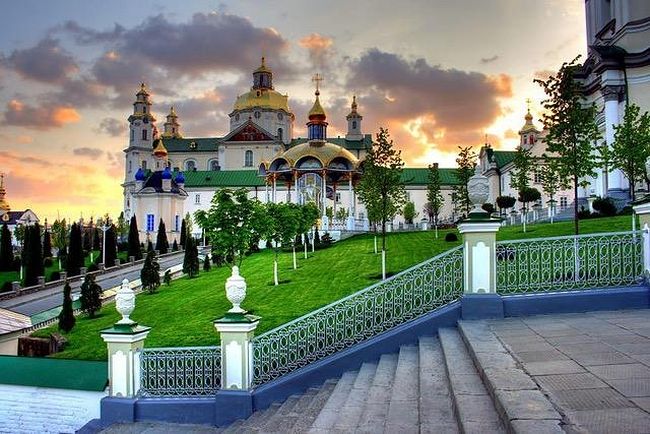 Pochaev Lavra. Photo: Monasteries.org.ua.
Pochaev Lavra. Photo: Monasteries.org.ua.
Soon the Catholic Church in the USA allocated 100 million dollars to help the Catholics in the USSR.13 A considerable amount of this was spent on buying out Orthodox priests. The Uniate bishops followed the instruction of the Roman Curia that such a “holy” cause, as the conversion of “schismatics” to the Catholic faith, was not possible to carry out through threats alone. In 1991, in Galicia, 232 priests of the Russian Orthodox Church went into the Greek Catholic Church and were “ordained again” by Uniate Bishops.
Cardinal Myroslav Ivan Lubachivsky spoke about this in an interview published in the newspaper “Meta” on February 13, 1995. In this interview, the cardinal says that the Catholic Church recognizes the apostolic succession in the Orthodox Church, but the situation with the Russian Church is different, since the bishops there are unbelieving agents of the KGB, and this means they cannot understand the meaning and the essence of the sacraments they perform, and therefore these sacraments are invalid.14
In fact, the Uniate hierarch needed to somehow explain to a perplexed journalist how Catholics can pray in churches which were forcefully taken away from people who were, like them, believing Christians, and why those Christians should be banished from their churches.
The Greek Catholic clergy had to constantly instill in the population of Galicia that Orthodoxy is a false faith, and that the Russian Church is “graceless”. And the Uniate priests had successes in this. There were cases when, having broken into the church, the Greek Catholics immediately sawed off the “extra” bars on the “incorrect” eight pointed [tri-bar Orthodox style.—Trans.] crosses, painted pierced hearts on the icons of the iconostas, and publicly threw into puddles the Holy Gifts from the Tabernacles. Priests and faithful, of course, could not lightly tolerate such sacrilege against holy sites. There were fights and bloodshed all around.
At the end of December 1989, in the Dolinsky district of the Ivano-Frankivsk province’, two unknown persons assaulted the abbot of Hoshevsky monastery Hegumen Seraphim (Demianov) in the night, stabbing him in the abdomen and chest as a warning that he should have surrendered the monastery to the Uniates.
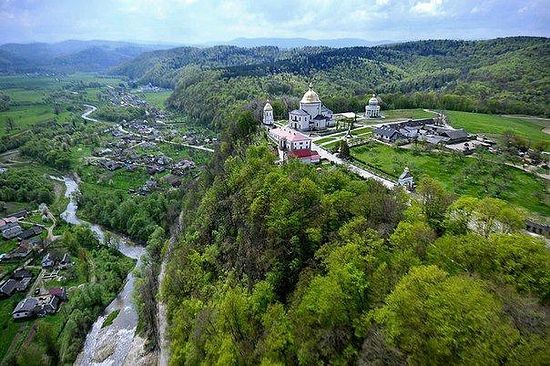 Hoshevsky monastery. Photo: www.drive2.ru
Hoshevsky monastery. Photo: www.drive2.ru
On February 2, 1990, the Uniates stormed into the monastic property, and broke down the doors of the church of Hoshevsky monastery; arson attacks on Orthodox houses (about ten buildings) began in the villages near the monastery.
On December 12, 1989, Vasyl Mokritssky, a parishioner was killed while defending a church in the village of Perevoloka, in the Buchachsky district of the Ternopil province.
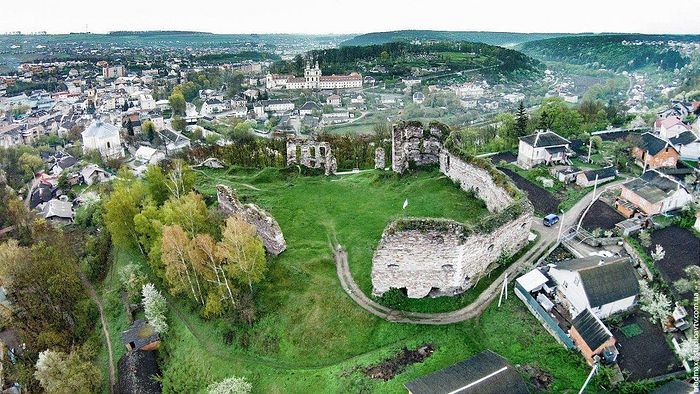 A ruined castle in the Buchachsky district of Ternopil province. Photo: lookmytrips.com
A ruined castle in the Buchachsky district of Ternopil province. Photo: lookmytrips.com
In November of 1990, Priest Vasily Bochalo died of a heart attack during the storming of a church in the village of Zalissya, in the Zolochiv district of the Lviv province.15
In 1990, there were 2,639 parishes of the Russian Orthodox Church in Galicia; of them:
-
1237 were in the Lviv province,
-
619 were in the Ivano-Frankivsk province,
-
783 were in the Ternopil province.
Between 1990 and 1997 the Greek Catholics seized around 2000 churches of the Ukrainian Orthodox Church [Moscow Patriarchate—Trans.]; out of them:
-
7 were in the Chernivtsi province,
-
125 were in Transcarpathia
-
Around 1000 were in Lviv Province,
-
More than 500 were in the Ivano-Frankivsk province,
-
740 were in the Ternopil province.
In order to seize the churches, the Greek Catholics argued the necessity to restore historical justice. They demanded the return of churches that had belonged to the Greek Catholic church prior to the war. That principle—of historical justice—is completely understandable… but only at first glance.
To judge how much respect the authorities in Galicia held for historical justice, one could simply look at the remaining 126 Roman Catholic Kostels [Churches.—Trans.], of which 23 were in Lviv, which the patriotic authorities of Galicia distributed to the Uniates [Greek Catholics.—Trans.], protestants, and schismatics, but not to their actual historical owners—the Roman Catholics.16
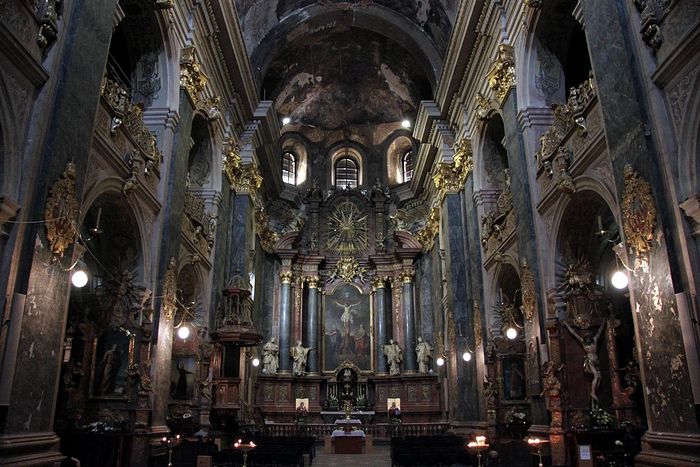 Roman Catholic Saints Peter and Paul Garrison Church Lviv. Photo: wikimedia
Roman Catholic Saints Peter and Paul Garrison Church Lviv. Photo: wikimedia
For them, priority was placed on a different principle—political expediency.
By taking churches away from the Orthodox, the authorities did not restore, but violated historical justice, which was restored at the Lviv Church Council in 1946. A story was perceived in the national memory told by a Russian soldier in captivity during the First World War. Angered by the refusal of a captive Orthodox priest who was dying in the hospital and refusing to accept before death the “true” catholic faith, a Uniate priest asked if he would be afraid to be buried in the Galician land amongst Catholics.
To this the Russian Priest replied:
“Do not be so kind as to worry, Reverend Father, our Russian soldiers will be burying me, and I have already asked them to dig my grave one bayonet’s length deeper—because everyone lying there is Orthodox.”
In the year 1700, a bishop of Lviv, Joseph (Shumlyansky) under pressure from the occupying authorities of the Polish-Lithuanian Commonwealth, betrayed the Church, and transferred 1,250 Orthodox churches to the Pope, a record of which is preserved to our days. Almost all present Uniate churches stand on the site of dismantled ancient Orthodox churches, and those which are more than 250 years old, were originally Orthodox.17
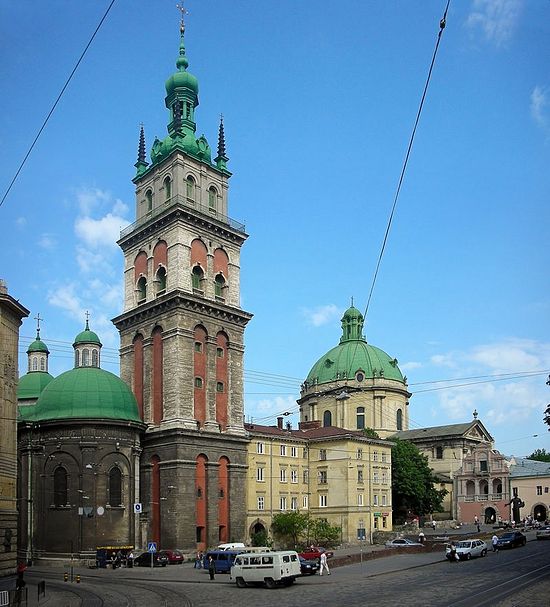 Lviv Dormition Church belonged to the famous Dormition Brotherhood where Saint Petro Mohyla obtained his primary education. Photo: Wikipedia
Lviv Dormition Church belonged to the famous Dormition Brotherhood where Saint Petro Mohyla obtained his primary education. Photo: Wikipedia
Moreover, during the post-war decades, three generations of Orthodox parishioners grew up in these churches, prayed in them, saved them from closure and destruction, repaired and beautified them. All these people are not newcomers, but the direct descendants and heirs of those Uniates who controlled those churches until 1946. And their rights to these churches are indisputable.18
And finally, there was a massive disproportion between the real number of believing Greek Catholics, and the number of churches which they claimed. According to the council of religious affairs of the Ukrainian SSR, in 1988, about 100,000 practicing Greek Catholics lived in Transcarpathia and Galicia united in 138 illegal communities, and another third of the population, being Orthodox, was sympathetic to the Uniate faith.192021 To satisfy the spiritual needs of those people, a quarter of those churches which they demanded would have been enough.
That is why the Greek Catholic bishops protested whenever it was suggested to decide ownership of the churches by a secret ballot referendum conducted by the inhabitants of the village. But the plan of the Vatican was exactly that, having seized the churches, to force the Orthodox to change their religion.
In autumn of 1995, the President of Ukraine Leonid Kuchma (1994-2005) established a government commission to study the religious situation in the Lviv province.
 Churches of different denominations in Lviv. Photo: ukraine-travel-secrets.com
Churches of different denominations in Lviv. Photo: ukraine-travel-secrets.com
The commission established that out of 1,299 places of worship that were transferred to religious communities in the Lviv province, 80 percent of the churches were transferred to Greek Catholic communities, and only 16 percent to the Orthodox. In the Ivano-Frankivsk province’, not a single religious building was transferred to Orthodox religious communities, while several churches were transferred into the ownership of Protestant communities.22 In 2002, in the Ternopil province, the ratio was 85 percent to 27 percent, and in Ivano-Frankivsk province’ - 93 percent to 8.4 percent. In several villages of Ivano-Frankivsk province, Orthodox people weren’t even aloud to maintain ownership over churches they literally just built.23
The result of the policy pursued by local authorities and their double standards in regards to religious communities of different confessions resulted in a tense inter-confessional confrontation in the western regions of Ukraine.
In the early 1990s there were fights over churches in over 1,500 settlements. In the Lviv province, in 1991 alone there were about 900 so-called “hot spots”.24 In 1994, in 600 settlements of the Lviv province’, over 1,400 people were held criminally liable for acts of violence motivated by inter-confessional confrontation.
In order to prevent acts of violence and for the enforcement of court decisions, the police and special forces had to be involved multiple times.
Here is a noteworthy fact from the not distant past of the Lviv diocese. On the 16th of March, under orders of M. Horynya, the chairman of the Lviv province council, around 600 police officers and the special forces unit “Berkut” were sent to the village of Medenychi25, of the Drohobych district of the Lviv province for the transfer of local parish to the Ukrainian Greek Catholic Church.
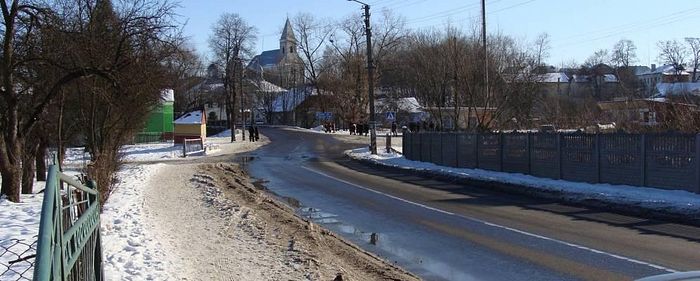 Medenychi, Lviv region. Photo: www.komandirovka.ru
Medenychi, Lviv region. Photo: www.komandirovka.ru
The special forces broke down the door and entered the church. After the hard use of physical methods and special means, in particular tear gas, members of the Orthodox community were ousted from the church building. Within two days, the church was handed over to a community of Greek Catholics hastily organized by representatives of the local intelligentsia, who subsequently abandoned the church building after the departure of the police, and it was taken back by the Orthodox.
During the execution of the orders of the local authorities on the transfer of religious buildings, acts of violence arose during the inter-confessional conflicts throughout the Lviv province, occurring in the following cities: Sambir, Zhovkva, Khyriv, Novyi Rozdil, Kamianka-Buzka, Dobromyla, Stebnyk, and Mykolayiv On Dniester.
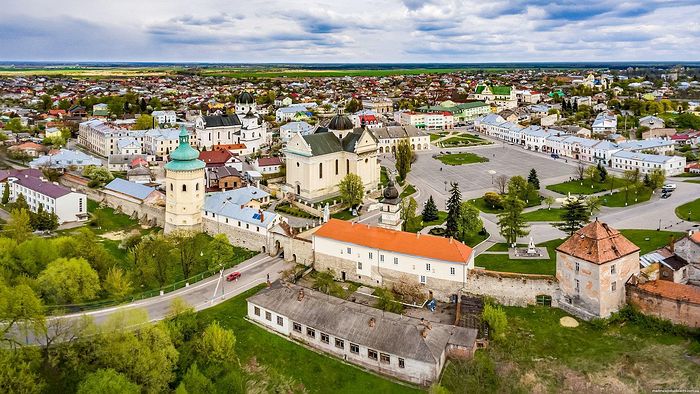 Zhovkva Castle, Lviv region. Photo: Ukrainetrek
Zhovkva Castle, Lviv region. Photo: Ukrainetrek
[Acts of violence also occurred in] the villages of Ostalovychi and Mereshchiv of the Peremyshlyans'kyi district, Rossokhi and Rypyanoe of the Starosambirs'kyi (Old Sabir) district, Zhovtantsi and Kukeziv of the Kam'yanka-Buz'kyi district, Hai-Ditkovetski and Bilyavtsi of the Brodivskyi district, Dorozhyv and Chukva of the Sambir district, Pidbuzh and Yasenytsya-Sil'na of the Drohobych district, Solvita and Yaktoriv of the Zolochiv district, Chernylyava, Cholhyni, Drohomyshl' of the Yavoriv district, Zvertiv of the Zhovkva district, and Velyki Mosty of the Sokal district.
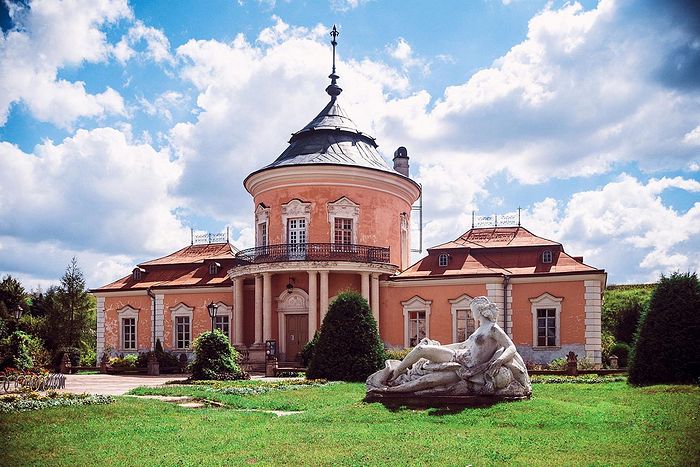 The manor house of Zolochiv castle
The manor house of Zolochiv castle
Amendments to the law concerning freedom of conscience, according to which in settlements where there are two religious communities (Greek Catholic and Orthodox), who claim one church building, which they agree to share between each other, only aggravates the situation.
Under the terms of the double standard politics pursed by the local administrations in Galicia, in relation to the Orthodox communities, these changes in legislation gave a clear privilege to the Greek Catholics. They allowed them to legally occupy those churches which were still firmly Orthodox. And those who introduced these amendments to the law understood very well what they were doing. As it was planned, the Greek Catholics would enter the Orthodox church right in the middle of the Divine Services, replace the locks on the church door, not wanting to listen to these services anymore.
At the same time, the local authorities recommended that the Orthodox themselves needed to clear up their relations with their Catholic “brothers”. And in those cases where the Orthodox community, not wanting to be on the street, refused to enter into an agreement with the Greek Catholic community on the alternate use of their church, the authorities decided to force this system on the parish with the help of law enforcement agencies.
Forced introduction of the so-called “alternating” [rotating, share.—Trans.] divine services deprived the word alternating of all its meaning, since it resulted in the de jure liquidation of one of the communities, and the church was simply handed over to the only remaining legally registered community —the Greek Catholics. At the same time, it is important to realize that the outlawed religious community did not disappear; its members were simply deprived of the opportunity to satisfy their religious needs using legal methods. In December of 1992, in the Lviv province, this situation was recorded in seventy-two populated areas.26
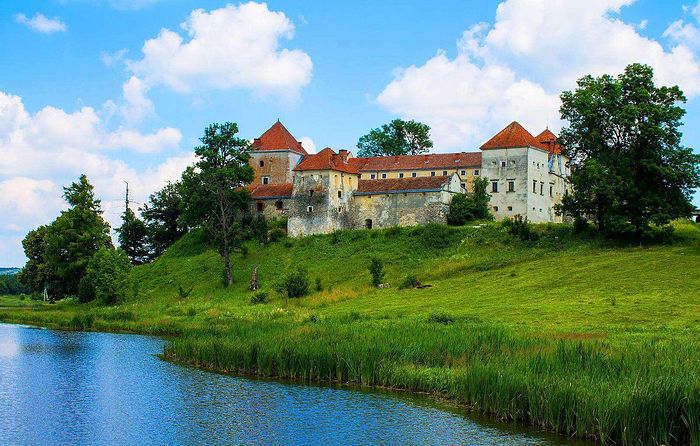 Svyrzhsky Castle, Lviv Province. Photo: Karpaty.life
Svyrzhsky Castle, Lviv Province. Photo: Karpaty.life
It is completely expected that the legislative initiative on the application of part 3 of article 17 of the law of Ukraine “On Freedom of Conscience and Religious Organizations”, could not lead to an improvement of the situation. Of the 700 decisions on the introduction of alternating use of churches, less than a third were implemented.
More than 2000 times in the settlements of Lviv, there was a rough confrontation between the Greek Catholics and the Orthodox; the Lviv Province department for religious affairs received more than 800 complaints on property issues, dozens of Orthodox communities were deregistered, (quite simply, abolished).
It was not uncommon for decisions to be made to transfer churches to Greek Catholics in settlements where more than seventy percent of the inhabitants were Orthodox. For example, in the village of Nahachiv in the Yavoriv district, there are 1000 Orthodox families, and only 200 Greek Catholic families; the Church however, in the end, was transferred to the Greek Catholics.
In the village of Holoskovychi in the Brodivskyi district, there are 3000 Orthodox families and seven Greek catholic families—the Church was given to the Greek Catholics.
In the village of Hlibovychi, in the Peremyshlyans'kyi district, where the Orthodox community numbers 450 people and the Greek Catholics sixty, the local church was transferred by the decision of the regional administration to the Greek Catholics. On August 3, 1995, without the knowledge of the village council, the court executor27 attempted to implement the decision of the authorities. As a result, agricultural work stopped in the village and harvesting was disrupted. Only due to the timely intervention of the deputies of the council was it possible to avoid bloodshed.
On June 16, 1995, in the village of Rossokhi of the Starosambirsky District, in which seventy percent of the inhabitants are of the Orthodox confession, the “transfer” of a church was accompanied by the use of physical pressure and tear gas against the local residents. There was a clash between law enforcement officials and villagers. A criminal case was opened on that fact.
In the village of Voyutichi of the same district, for the fulfillment of the order of the transfer of the church to the Greek Catholics, around 472 law enforcement officers were brought in nine times, including the Berkut Special forces unit, but alternating use of the church by the residents of the village remained unrealized.
In total, in the year 1995, over 2,000 law enforcement officers and special forces were deployed for the forced “liberation” of churches from Orthodox Christian citizens; they spent 14,000 man-days, which could have provided Lviv with 40 overlapping block to block patrol routes for three months, and spent over 24 billion coupon-karbovantsiv.28
Nevertheless, the plan to oust the Orthodox from Galicia by imposing on them a so-called alternating use of churches failed. In 1999, seventy percent of court decisions regarding the use of churches remained unfulfilled. The situation in 446 settlements was defined as “acute”. Moreover, in 158 of them, there was an open confrontation between church communities. In eighty-five percent of all settlements with an acute religious situation in cities and villages there were conflicts between Orthodox and Greek Catholics. Among them:
-
23 villages in Transcarpathia (Zakarpattya), in 17 of which the situation was defined as “extremely acute”;
-
79 – in the Ternopil region (with 11 considered “extremely acute”);
-
157 – in the Ivano-Frankivsk region;
-
125 – in the lands of Lviv
In the majority of localities, orthodox confessions—mostly believers of “Ukrainian Autocephalic Orthodox Church” (UAOC), and the “UOC of the Kievan Patriarchate”, held churches and prevented Greek Catholics from entering. In 2002, the state committee on religions reported “certain tensions” in 97 localities (28 in the Ternopil Province, 22 in the Lviv Province, 19 in Ivano-Frankivsk Province, 10 in Chernivtsi, 13 in Transcarpathia, and 1 in Volhynia).29
Some time had to pass for Cardinal Myroslav Ivan Lubachivsky to note that “in fact, in Western Ukraine, we now resign ourselves to the fact that in many cases today, historically Greek Catholic churches have become Orthodox”.30
The storming of three Orthodox dioceses in Galicia, and the rapid growth of the schismatic structures—the so-called Ukrainian Autocephalic Orthodox Church (UAOC) and the Ukrainian Orthodox Church of the Kievan Patriarchate (UOC-KP)—paradoxically contributed to the preservation and development of Orthodox-Catholic dialog. It became much more comfortable for the Russian Orthodox Church to interact with the Vatican under the condition of this change of the subjects of the conflict; the Ukrainian Greek Catholic Church is currently not standing up strongly against the Russian Orthodox Church and its autonomous portion—the Ukrainian Orthodox Church—but instead it’s the self-proclaimed and non-canonical UAOC, and since 1992, the UOC-KP.
“We’d quickly agree,” writes an official of the Department for External Church Relations of the Moscow Patriarchate, “that such a conflict concerning the beating of the Orthodox, violent seizure of churches, and threats isn’t currently there. Everything that was once siezed is being held, the Orthodox were successfully marginalized, and so there is no reason for a conflict. Everything is quiet and peaceful.”31
For the leadership of the Ukrainian Greek Catholic Church it is also more convenient to have business with the three orthodox churches, two of which are the main subjects of the conflict—the UAOC and the UOC-KP—which are not recognized by the fullness of Orthodoxy, and besides, they also sharply compete with each other.32
On August 23 of 2011, the so-called patriarch Svyatoslav Shevchuk even paid a visit to Metropolitan Volodymyr (Sabodan) in Kiev Caves Lavra.
But in reality, the Catholic Church does not have, and can’t have another strategy regarding Orthodoxy, other than that of taking it over. On October 18, 2017, Greek Catholics captured the Annunciation Church of the Ukrainian Orthodox Church in the city of Kolomyya (Kolomyia), in the Ivano-Frankivsk province. [See this English language video for coverage of the church seizure.—Trans.]
The Ukrainian Orthodox Church since 1992, had been constantly holding services in this architectural monument, which the authorities handed to [the Greek Catholics] precisely because the church was Orthodox since its foundation.
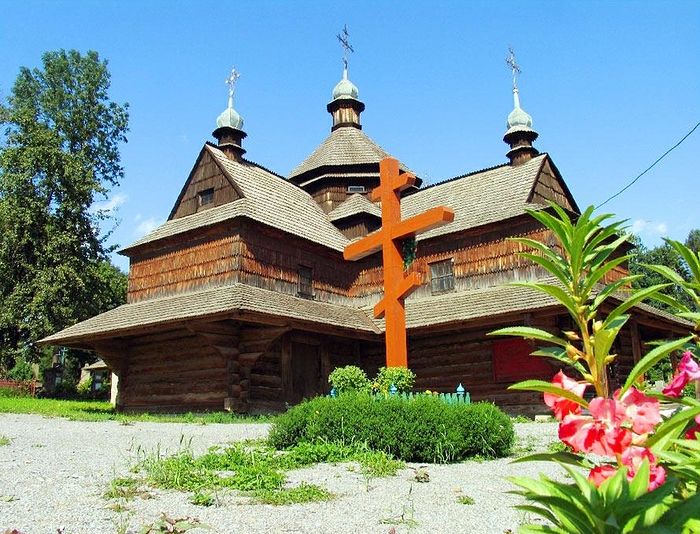 Annunciation Church. Photo: Ukranietrek
Annunciation Church. Photo: Ukranietrek
This old church was built in 1587, 113 years before the church union with Rome was introduced in Galicia. Words of judgment about this act of lawlessness have not been heard from the so-called Patriarch Svyatoslav Shevchuk, nor from the Bishop of Kolomyya Vasily Ivasiuk. The head of the Ukrainian Greek Catholic Church (UGCC) commission on interfaith dialogue, priest Igor Shaban, explained the incident thusly: “For several months, Ukrainian Orthodox Church and UGCC believers prayed outside the church’s walls, until one day they found it was open. The first to see it was the Greek Catholics who then simply entered the church, “which was regarded in the Moscow Patriarchate as a seizure of the church.”33
On October 22, 2017, the Greek-Catholic radicals, led by priests, did not let the Orthodox believers of the Annunciation Church of the city of Kolomyya enter the enclosure of their church to perform a public moleben’. And again, violence was used, people were kicked. The UGCC priest Nikolai Medinsky, who personally beat and insulted the parishioners, showed particular aggression.
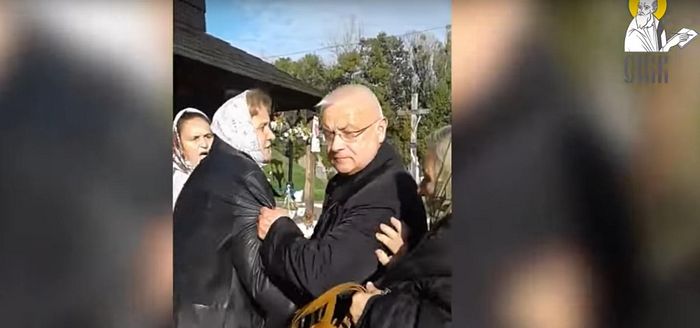 Uniate “Priest” Nikolai Medinsky pushing elderly women. The “chaplain” previously called for “death to the enemies”.
Uniate “Priest” Nikolai Medinsky pushing elderly women. The “chaplain” previously called for “death to the enemies”.
The question is on what basis.
Greek Catholics seized a church built by the Orthodox more than 100 years before the introduction of the Union in Galicia; the Catholic priest answered directly and frankly: “We will not throw crumbs to of Moscow pigs. You are biomass devoid of rights. We will take not only this church from you, we will take it all. We will kick you off our land, and from the Kiev Caves Lavra.”34
Journalist Sergei Nazarchuk was not surprised by this development: “The statements of the two representatives of the higher circles of the UGCC show that the Uniates in reality are not trying to reconcile with the Orthodox. It was just an attempt to whitewash their image, first of all spoiled by the extreme impiety of the Uniate clergy in Kolomyya. Let me remind you that believers of the Ukrainian Orthodox Church were threatened with a Kalashnikov assault rifle, the promise to cut their throats, and the personal involvement of the UGCC priests in beating the Orthodox.”
Without a word the Greek Catholics will continue to seize churches from the Orthodox, and not only from the Ukrainian Orthodox Church of the Moscow Patriarchate. Not long ago, the UGCC priest, Mikhail Zabandzha, published a list of 110 church buildings that Uniates intend to seize in the Ternopil province.35 Archpriest Nikolai Danilevich, Deputy Chairman of the Department for External Church Relations of the Ukrainian Orthodox Church, assessed the ecumenical aspect of the event: “It’s worth about a single penny, all this talk about Christian unity, communion between Orthodox and Greek Catholics, about a single local church, about the Kievan Church, etc. Before all this, those ideas were perceived with enough restraint, and now Kolomyya has reduced it all to zero.”
In recent years, the increase in the number of registered Greek Catholic communities is ten to thirteen per year. At the same time, more than 2,000 students’ study at sixteen religious’ schools of the UGCC.
Moreover, for a decade and a half in Galicia no one heard of a vacancy for priests. Young Greek Catholic priests are forced to go to the eastern provinces. Over the past thirty years, in those regions of Ukraine where Uniate communities were previously absent, two dioceses were opened: in Kamenets-Podilsky and Kiev, and five exarchates: Volhynia, Kharkiv, Donetsk, Odessa, and Crimea, as well as 300 new Greek Catholic parishes.
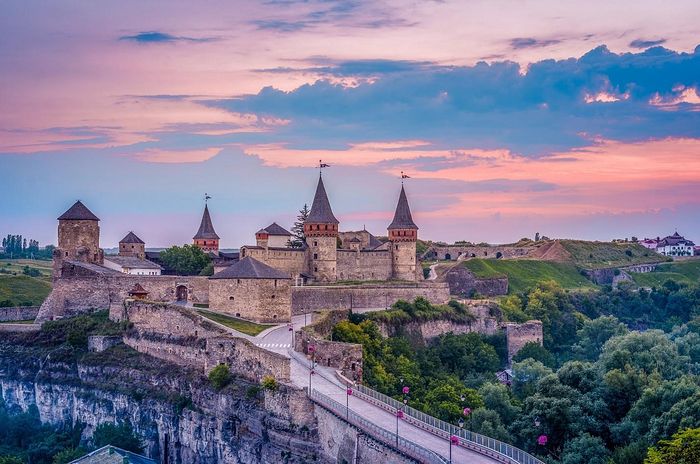 The Castle at Kamenets-Podilsky
The Castle at Kamenets-Podilsky
The late cardinal Lyubomyr Huzar always declared that the Greek Catholics should “from their end do all that is possible to convince the Orthodox that we are not their enemies and do not want to grow at their expense.”36 The current head of the Ukrainian Greek Catholics publicly stated the same thing: “Our presence on this territory is not proselytizing. We go to our own. This is the right of every believer—to have a pastor.”37
Bishop Andrei (Sapelyak), who was once the secretary of the synod of bishops of the Ukrainian Greek Catholic Church was more outspoken. In an interview, discussing how many Orthodox in Ukraine “are still hesitant” he calculated that in the case of the official proclamation by the Pope of a Kievan-Galician patriarchate for Greek Catholics, thirty percent of the Orthodox world would lean towards the side of the UGCC.38
It is to these goals that the so-called Patriarch Svyatoslav (Shevchuk) called, announcing the all-Ukrainian pilgrimage and Uniate liturgy in the ancient Saint Sophia of Kiev Cathedral on April 7, 2019.
Today in Galicia, the number of Orthodox parishes of the three denominations taken all together is 2039, and of the Greek Catholics, 2994. In total, the Ukrainian Greek Catholic Church unites 3323 acting communities, of which 274 are missionary parishes located outside western Ukraine. Another 338 parishes belong to the independent Mukachevo Uniate diocese in the Transcarpathian (Zakarpattya) province.

